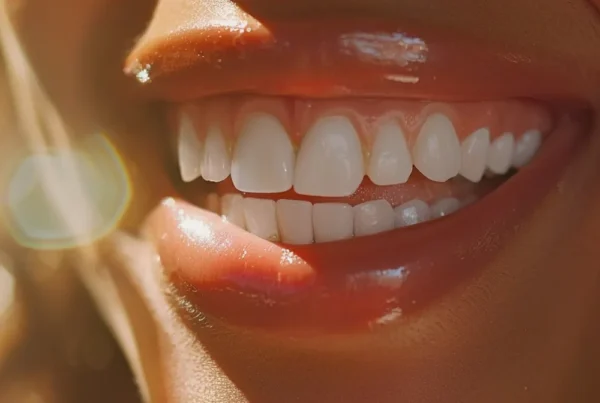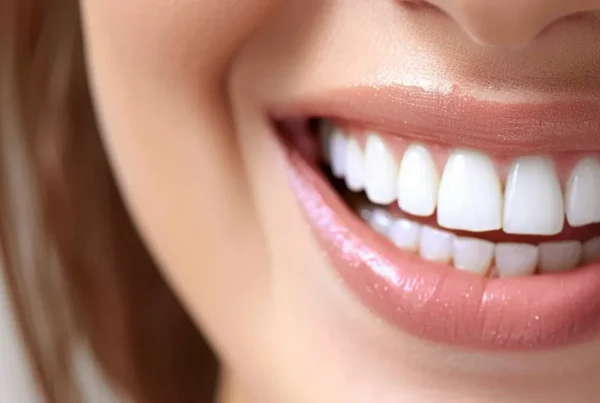Getting your teeth professionally whitened is exciting because it makes your smile look amazing, but keeping them white takes some special care every day. Think of it like getting a beautiful new white shirt, you need to be careful about what you eat and drink so it doesn’t get stained. Dr. Bethaney Brenner in Burlington, Connecticut has over 40 years of experience helping people keep their teeth bright and beautiful after whitening treatments, and she knows all the best tricks for making your white smile last as long as possible.
Your teeth are a little bit different right after whitening because the tiny holes in your tooth enamel are opened up, kind of like how a sponge soaks up water more easily when it’s wet. This means your teeth can pick up new stains more quickly for the first few days after treatment, so you need to be extra careful about what you put in your mouth. Dr. Brenner graduated from the University of Connecticut School of Dental Medicine and has been helping patients with beautiful smiles since 1980.
The good news is that with the right daily habits and smart choices about food and drinks, you can keep your teeth looking white and bright for months or even years. Dr. Brenner has been recognized as one of Connecticut’s Top Dentists and America’s Best Dentist because she teaches her patients exactly how to take care of their whitened teeth. When you follow the right steps and visit your dentist regularly, your investment in teeth whitening can give you a confident, beautiful smile for a very long time.
Taking Care of Your Teeth Every Day
Keeping your whitened teeth bright starts with excellent daily care that goes a little beyond regular brushing and flossing. Using the right products and techniques helps protect your teeth from new stains while keeping them healthy and strong. Dr. Brenner’s 40+ years of experience have shown her that patients who follow good daily routines keep their white teeth looking great much longer than those who don’t pay attention to their oral hygiene.
Brushing your teeth at least twice a day with whitening toothpaste helps remove surface stains before they can settle into your tooth enamel. The special ingredients in whitening toothpaste work like gentle scrubbers that polish away stain particles while you brush, keeping your teeth looking their whitest between dental visits.
Flossing every day is super important because it removes food particles and bacteria from between your teeth where stains can hide and your toothbrush can’t reach. Using an antimicrobial mouthwash after brushing and flossing reaches even more areas and helps kill bacteria that could cause stains or other problems.
Smart Eating and Drinking Choices
What you eat and drink has a huge impact on how long your teeth stay white after professional treatment. Some foods and beverages are much more likely to stain your teeth than others, so knowing which ones to avoid or enjoy carefully helps protect your bright smile. Dr. Brenner teaches her Burlington patients that making smart choices doesn’t mean giving up everything you love, it just means being thoughtful about when and how you consume staining foods.
Following a “white diet” for the first few days after whitening means eating foods that are light in color and less likely to stain your teeth. This includes things like chicken, white fish, rice, bananas, and dairy products like milk and cheese. These foods are not only safe for your newly whitened teeth, they also provide good nutrition for overall health.
When you do want to enjoy darker foods or drinks like coffee, tea, or berries, using a straw helps the liquid bypass your front teeth where stains are most noticeable. Rinsing your mouth with water right after eating or drinking something that could stain helps wash away particles before they can attach to your teeth.
Drinking plenty of water throughout the day helps keep your mouth clean and dilutes staining substances that might otherwise stick to your teeth. Here are some foods and drinks to be careful with:
- Coffee, tea, and dark sodas that can stain teeth quickly
- Red wine, grape juice, and other dark-colored beverages
- Berries, tomato sauce, and other deeply colored foods
- Candy, especially hard candies that stay in your mouth a long time
Dr. Brenner’s holistic health training helps her understand how diet affects not just your teeth, but your overall wellness, so she can give you advice that benefits your whole body.
Professional Care to Keep Your Smile Bright
Regular visits to your dentist are essential for maintaining the results of your teeth whitening treatment and keeping your smile looking its absolute best. Professional cleanings remove plaque and tartar that regular brushing can’t eliminate, while also polishing away surface stains that might be starting to develop. Dr. Brenner has been teaching dental students at the University of Connecticut since 1980 and uses the most advanced techniques to help her patients maintain beautiful, healthy smiles.
Professional touch-up treatments can refresh your whitening results when they start to fade, bringing back that bright white color you loved right after your initial treatment. These touch-ups are usually quicker and more comfortable than the original whitening procedure because they’re maintaining results rather than creating them from scratch.
During your regular checkups, Dr. Brenner can evaluate how well your teeth are maintaining their whiteness and make recommendations for adjustments to your home care routine or suggest products that might work better for your specific needs.

Lifestyle Changes That Protect Your Investment
Some lifestyle habits can make a huge difference in how long your whitened teeth stay bright and beautiful. Making smart choices about habits that affect your teeth helps protect the money you invested in whitening treatment and keeps your smile looking amazing. Dr. Brenner’s comprehensive training in multiple dental specialties gives her unique insights into how different lifestyle factors affect tooth color and overall oral health.
Avoiding tobacco products is one of the most important things you can do to keep your teeth white because smoking and chewing tobacco cause deep, stubborn stains that are very difficult to remove. Tobacco use also increases your risk of gum disease and other serious health problems, so quitting benefits both your smile and your overall health.
Limiting acidic foods and drinks helps protect your tooth enamel from damage that can make staining more likely. Things like citrus fruits, vinegar-based dressings, and carbonated beverages can soften your enamel temporarily, making it easier for stains to penetrate your teeth.
Creating Your Personal Maintenance Plan
Working with Dr. Brenner to create a personalized maintenance plan ensures that your whitening results last as long as possible while fitting into your lifestyle and budget. Every person’s teeth respond differently to whitening treatments and daily life challenges, so having a customized approach gives you the best chance of long-term success. Her extensive training in advanced dental techniques and holistic health allows her to consider all factors that might affect your results.
Your maintenance plan might include specific products that work best for your teeth, a schedule for professional touch-ups, and recommendations for managing any habits or health conditions that could affect your results. Dr. Brenner’s role as Treasurer on the Connecticut State Dental Association Board of Governors keeps her current with the latest developments in cosmetic dentistry and maintenance techniques.
Regular follow-up appointments allow for adjustments to your plan as needed and early detection of any issues that might threaten your whitening results. This proactive approach helps ensure that small problems are addressed before they become bigger, more expensive concerns that could require retreatment.
Protecting Your Beautiful Smile Long-Term
Maintaining whitened teeth is a partnership between you and your dental team that requires consistency and commitment but provides beautiful, confidence-boosting results. Understanding that whitening is not a one-time treatment but rather the beginning of a new approach to dental care helps set realistic expectations and ensures long-term success. Dr. Brenner’s 40+ years of experience and recognition as one of America’s Best Dentists demonstrate her commitment to helping patients achieve and maintain their ideal smiles.
Daily care with the right products and techniques forms the foundation of your maintenance routine, while smart dietary choices and lifestyle modifications provide additional protection against staining. Professional touch-ups and regular dental visits ensure that your results stay optimal and any potential problems are addressed promptly.
The investment you make in maintaining your whitened teeth pays dividends in terms of confidence, appearance, and oral health for years to come. With Dr. Brenner’s expertise and your commitment to proper care, your bright, beautiful smile can remain a source of pride and confidence throughout your life.
Book Your Consultation Today!
Dr. Bethaney B. Brenner DMD
8 Milford St, Burlington, CT 06013
Frequently Asked Questions
How can I keep my teeth white after whitening?
The best way to maintain white teeth is through excellent daily oral hygiene, smart food and drink choices, and regular professional care. Use whitening toothpaste, avoid staining substances like coffee and tobacco, and visit Dr. Brenner regularly for cleanings and touch-ups to keep your smile bright.
Will whitening my teeth once be enough for permanent results?
Teeth whitening is not permanent because your teeth are constantly exposed to foods, drinks, and other factors that can cause new stains. However, with proper maintenance including good home care and periodic touch-ups, you can keep your teeth looking white and bright for years.
How often should I get professional touch-ups for whitened teeth?
The frequency of touch-ups varies depending on your lifestyle, diet, and how quickly your teeth tend to stain. Dr. Brenner will create a personalized maintenance schedule that might range from every six months to every few years, based on your individual needs and goals.





